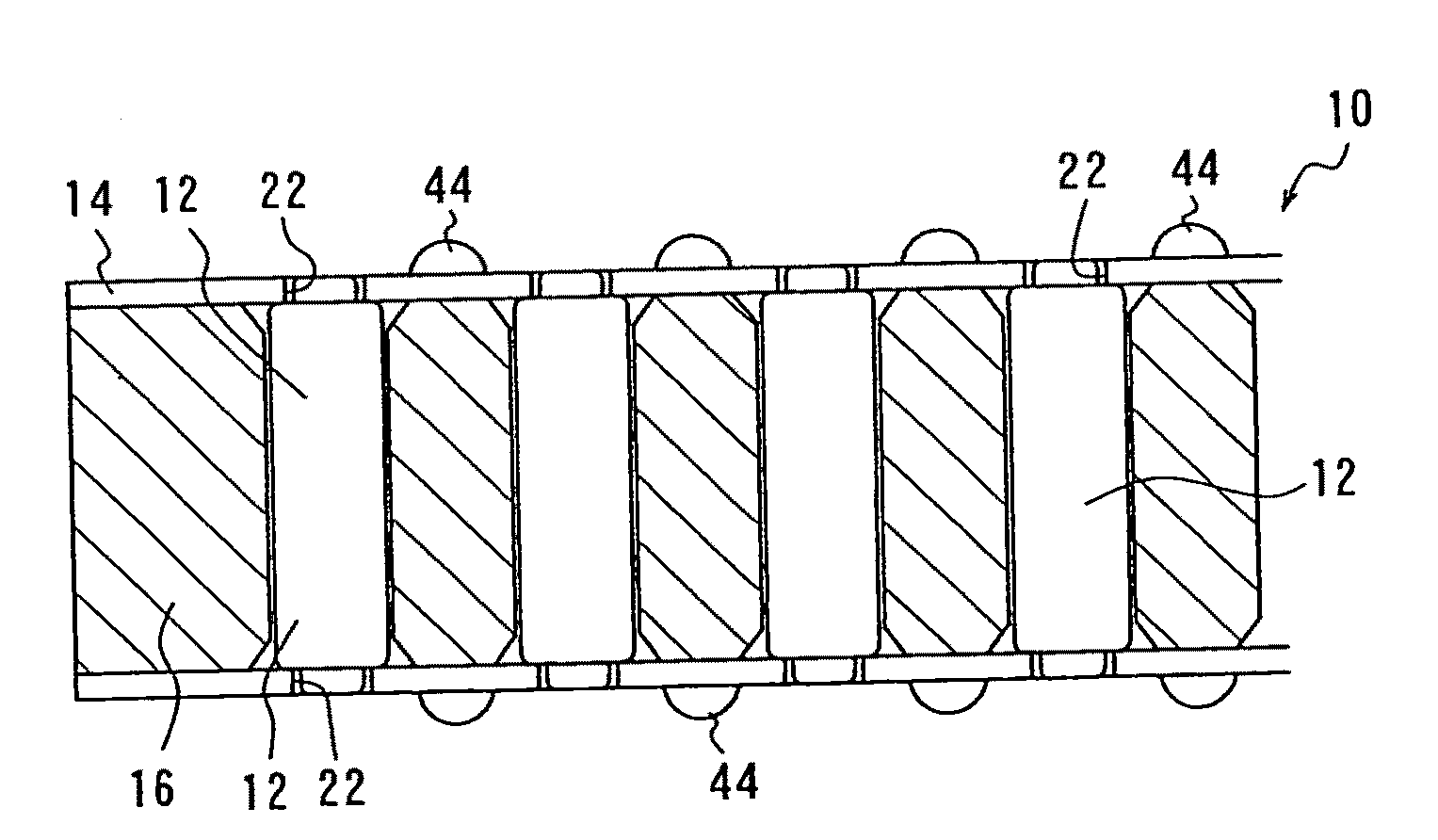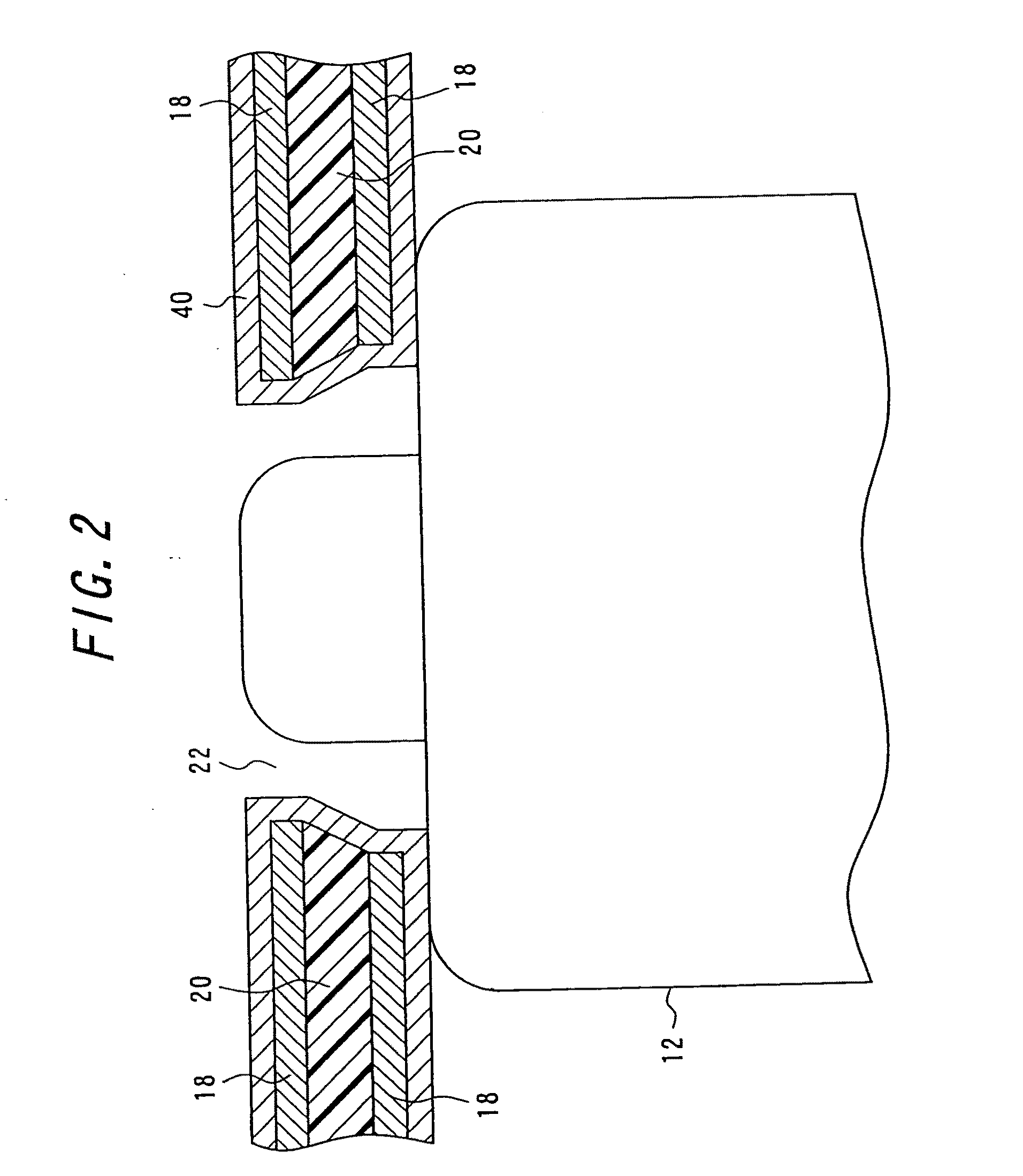Electric contact and method for producing the same and connector using the electric contacts
a technology of electric contacts and printed circuit boards, which is applied in the direction of manufacturing tools, non-printed masks, etching metal masks, etc., can solve the problems of short circuit, defective or failed electrical connections, and difficulty in accurately aligning the holes worked from the opposite sides
- Summary
- Abstract
- Description
- Claims
- Application Information
AI Technical Summary
Benefits of technology
Problems solved by technology
Method used
Image
Examples
Embodiment Construction
[0184]First, the production method of the through hole of claim 1 will be explained.
[0185]The method for producing a board formed with through-holes 22 according to the invention will be explained with reference to FIGS. 1A to 1H. FIGS. 1A to 1H are drawings for explaining the method for producing the board formed with the through-holes. The method for producing the board formed with the through-holes 22 is carried out in the following steps in which a flexible printed circuit board 14 consisting of a polyimide layer 20 and copper foils 18 and is worked in one direction from its one surface.
[0186]In the first step, as shown in FIG. 1A an acid proof material layer 38 having a plurality of holes A24 each having a required diameter and located at a predetermined position is formed by printing on one surface of the board 14, or an acid proof film is attached to the one surface, and an acid proof material layer 38 is formed by printing on the whole other surface of the board 14, or an ac...
PUM
| Property | Measurement | Unit |
|---|---|---|
| current density | aaaaa | aaaaa |
| width | aaaaa | aaaaa |
| width | aaaaa | aaaaa |
Abstract
Description
Claims
Application Information
 Login to View More
Login to View More - R&D
- Intellectual Property
- Life Sciences
- Materials
- Tech Scout
- Unparalleled Data Quality
- Higher Quality Content
- 60% Fewer Hallucinations
Browse by: Latest US Patents, China's latest patents, Technical Efficacy Thesaurus, Application Domain, Technology Topic, Popular Technical Reports.
© 2025 PatSnap. All rights reserved.Legal|Privacy policy|Modern Slavery Act Transparency Statement|Sitemap|About US| Contact US: help@patsnap.com



